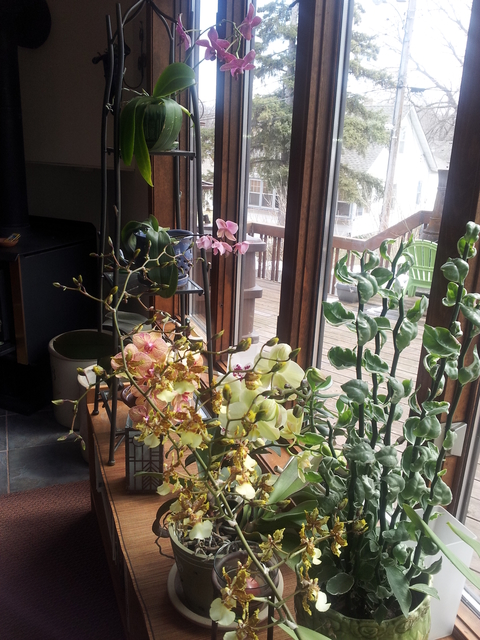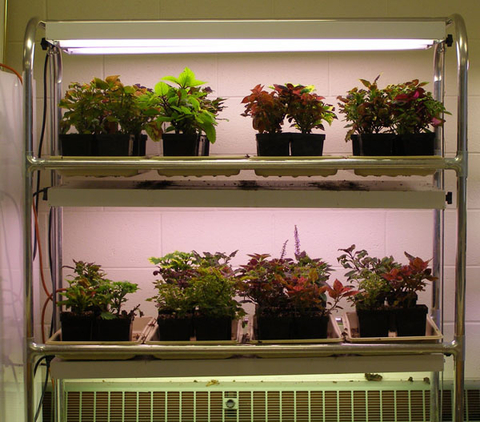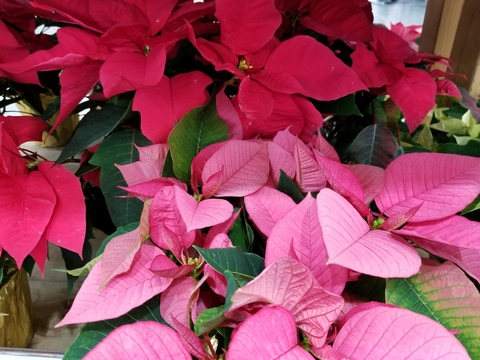How much light do houseplants need
Quick facts
- Select a plant with requirements that match the light environment in your home or office.
- Supplemental lighting can make up for a lack of natural sunlight.
- Plants without sufficient light may drop their leaves or fail to produce flowers.
- Plants exposed to too much light may become scorched, bleached and limp.
- Plants that don't get enough light can die.

Sufficient light is important to growing healthy plants
Light is one of the most important factors for growing houseplants. All plants require light for photosynthesis, the process within a plant that converts light, oxygen and water into carbohydrates (energy).
This much-needed energy is required by a plant in order to grow, bloom and produce seed. Without adequate light, carbohydrates cannot be manufactured, the energy reserves are depleted and plants die.
How much light does your home have?
In choosing an indoor plant, have a good idea of the quality and hours of natural light your home provides and select a plant with light requirements that match the indoor environment.
There are three factors to consider when you evaluate light:
-
Light intensity: the brightness of light, measured in foot-candles.
-
Foot-candle: the amount of light received by a 1-square-foot surface located one foot away from a light source equal to one candle.
-
-
Light duration: the number of hours of light per 24-hour period.
-
Light quality: the wavelength or color of light.
-
The light spectrum is comprised of red, orange, yellow, green, blue, indigo and violet light. Sunlight provides all colors of light.
-
Plants use two colors of the light spectrum: red and blue. Red light encourages budding, and blue light promotes foliage growth.
-
What if your home receives less sunlight?

Supplemental fluorescent lights
Supplemental lighting can also be added to make up for lack of natural sunlight.
-
Hang a regular fluorescent tube light (or shop light) about 10 to 12 inches above the plants. Available at home improvement stores and hardware stores.
-
LED grow lights are equipped primarily with red bulbs to encourage flower buds, and blue bulbs for foliage growth. Available at garden centers, online or at specialty shops.
-
Use a timer to provide supplemental light from 6 p.m. to 10 p.m. or longer if growing in a location with less natural light.
How are plants affected by low light?
- When plants lack light, chlorophyll (the green pigment in plants) is not produced, and plants can turn pale green to yellow to white.
- Plant stems become “leggy”, a term used to describe stems that are long and thin and appear to be reaching toward the source of light.
- The lack of sufficient light causes the plant to grow long spaces on stems between the leaf nodes (the point where a leaf grows out from the stem).
- Plants without sufficient light may also drop their leaves, especially older leaves.
- You may find that a variegated plant (leaves that are white and green) may revert to being solid green.
- Flowering plants may fail to produce buds.
How are plants affected by excess light?
- Plants exposed to too much light may become scorched, bleached and limp.
Understanding light conditions

A medium-light plant like African violet should be placed in an east-facing window

A high-light plant like Poinsettia should be placed in a south-facing window
Low light
(10-15 watts / 50-250 foot-candles)
- Low-light plants require little to no direct light. In their native growing environments, these plants are “understory plants” meaning they grow underneath the branches of larger plants.
- Indoors, a low light plant would be suitable for a north window or a fairly dark corner.
- Note that these plants do not dry out quickly. It is important to check the soil before watering. If it is cool and damp, do not water.
- A single fluorescent bulb with no other light is sufficient for growing these plants.
- These plants are also good options for the workplace that sometimes lacks natural light.
Medium light
(15-20 watts / 250 - 1,000 foot-candles)
- Medium light areas are well-lit areas in the home. Windows that face east are considered medium light.
- A medium-light plant can also be located near a west-facing window, but out of indirect light.
- Two fluorescent bulbs would provide sufficient light for these plants.
- Like the low light plants, these plants will not dry out as quickly. Avoid overwatering by feeling the soil.
High light
(more than 20 watts / more than 1,000 foot-candles)
- High-light areas are brightly lit locations such a south or southwest-facing windows.
- These are also the warmest areas in a home and plants will dry out faster than plants in lower light conditions.
- Check these plants more frequently for watering needs.
Plants for different indoor light conditions
It is important to note that while a plant may tolerate lower light growing conditions, more light may be required to promote dense foliage and flowering.
The following plants are listed under the light conditions that provide the best indoor growing environment.
Reviewed in 2019